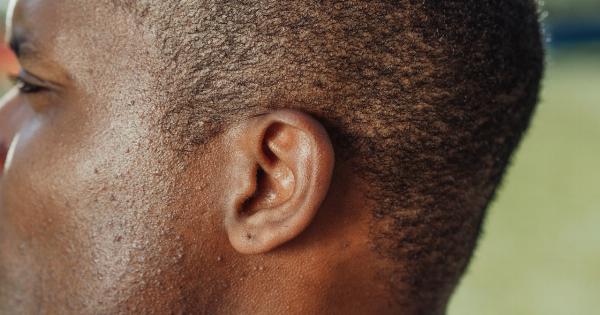The human ear is a complex and fascinating organ that plays a crucial role in our ability to hear and perceive sound.
While both the left and right ears are essential for auditory function, there is evidence to suggest that one ear may outperform the other in certain aspects. This article explores the differences between the left and right ears and investigates why one ear may have an advantage over the other.
1. Anatomy of the Left and Right Ears
Before delving into their respective performances, it is important to understand the anatomical structures of the left and right ears. The human ear consists of three main components: the outer ear, middle ear, and inner ear.
While the structures are almost identical on both sides, there are subtle differences that contribute to variations in performance.
2. Hemispheric Dominance and Auditory Processing
One of the key factors influencing the potential dominance of one ear over the other is hemispheric dominance, referring to the preference of one brain hemisphere in processing certain functions.
Studies have shown that the left hemisphere of the brain, which is dominant in most individuals, is primarily responsible for language processing. As a result, the right ear, which has a direct connection to the left hemisphere of the brain, may have an advantage in language-related tasks.
3. The Right Ear Advantage in Speech Perception
Several studies have provided evidence for the right ear advantage (REA) in speech perception.
When individuals listen to speech sounds, they tend to process and perceive them more accurately when presented to their right ear as compared to their left ear. This phenomenon is attributed to the dominant role of the left hemisphere in language processing, as mentioned earlier.
However, it is important to note that the REA may not be universal and can vary depending on factors such as age and individual differences.
4. Left Ear Advantage in Music Perception
While the right ear may have an advantage in language processing, the left ear has been found to outperform the right ear in certain aspects of music perception.
Research suggests that the left ear is better at processing the fine details of sounds, such as pitch and timbre, which are important in music perception. Additionally, the left ear also exhibits a stronger connection to the emotional centers of the brain, leading to a more emotionally rich experience when listening to music.
5. Binaural Hearing and Sound Localization
The ability to localize sounds in the environment is crucial for our survival and everyday functioning. Binaural hearing, which refers to the process of merging input from both ears to localize sound sources, plays a significant role in this process.
The slight differences in the timing and intensity of sounds reaching each ear allow the brain to accurately determine the location of the sound source. Both the left and right ears contribute to binaural hearing, making it difficult to determine a clear advantage for one ear over the other.
6. Factors Affecting Individual Ear Performance
While there may be general trends favoring one ear over the other in certain tasks, it is important to acknowledge that individual differences play a significant role in ear performance.
Factors such as hearing loss, brain development, and training can influence the abilities of each ear. For example, individuals with hearing loss in one ear may rely more heavily on the other ear, resulting in enhanced performance in that ear.
7. Importance of Balanced Hearing
While exploring the advantages and differences between the left and right ears, it is essential to emphasize the importance of balanced hearing.
Both ears contribute to our overall auditory experience and provide valuable input for the brain to process sound. Maintaining healthy hearing in both ears through regular check-ups, protecting against noise-induced hearing damage, and managing hearing conditions is crucial for optimal hearing performance.
8. Training and Strengthening of the Weaker Ear
If an individual notices significant differences in the performance of their left and right ears, it might be worthwhile to explore techniques for training and strengthening the weaker ear.
Auditory training exercises, such as those involving working memory and sound localization, can help improve the performance of the less dominant ear. Consultation with a hearing healthcare professional can provide further guidance on appropriate training techniques.
9. The Role of Technology in Enhancing Ear Performance
In an era of advanced technology, various hearing devices and assistive technologies are available to enhance ear performance and compensate for any weaknesses.
Hearing aids, for example, can be programmed to amplify specific frequencies or adjust sound balance between the two ears. Furthermore, advancements in cochlear implants have allowed individuals with profound hearing loss in one ear to restore their hearing perception.
10. Conclusion
While differences between the left and right ears have been observed in various aspects of auditory perception, it is important to recognize the interdependence and complementary nature of both ears.
Each ear contributes unique qualities to our auditory experience, and maintaining balanced hearing is vital for optimal sound processing. Understanding the factors that contribute to the performance of each ear can help individuals make informed decisions regarding their hearing health and explore appropriate interventions if necessary.































